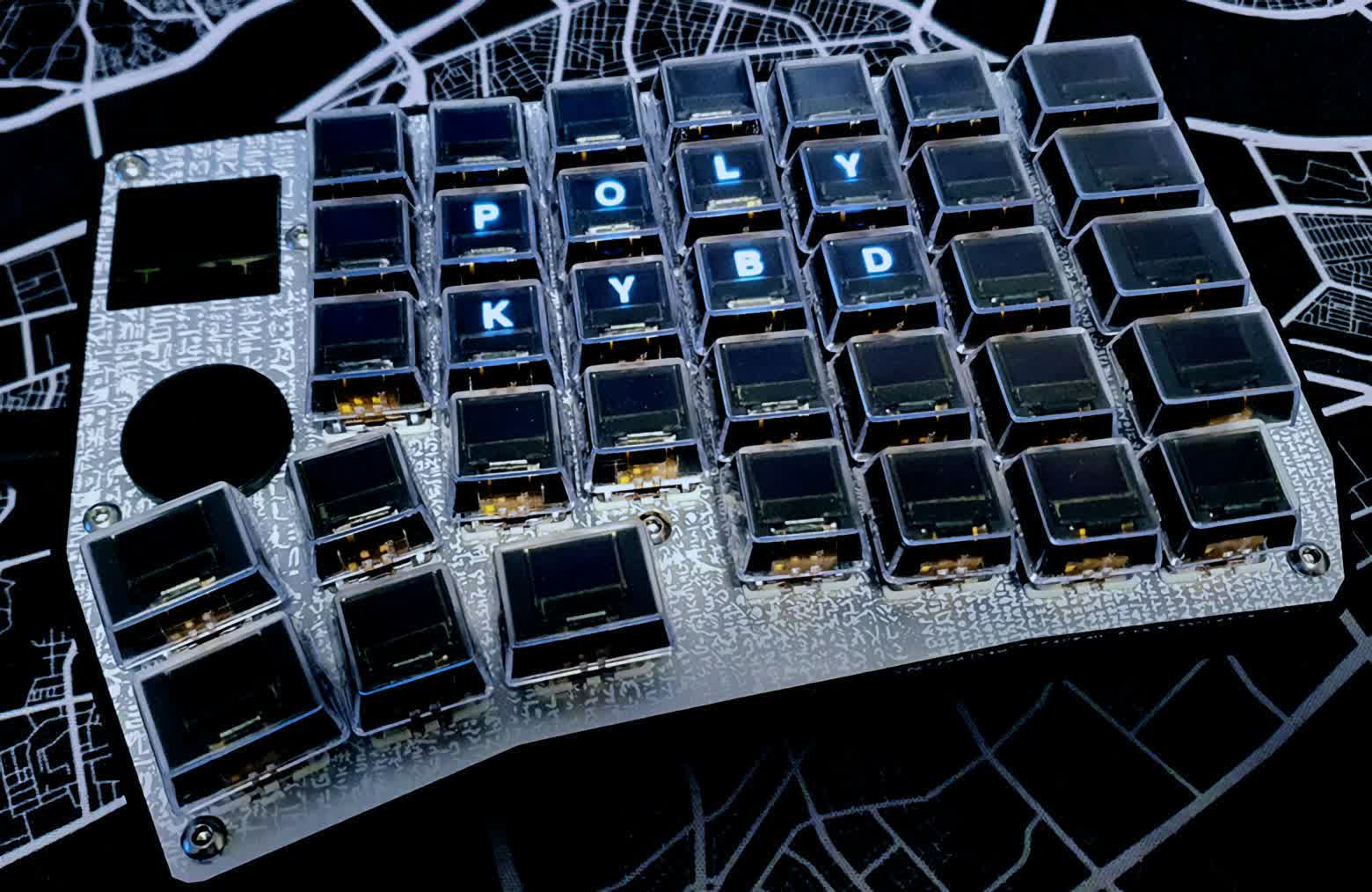In a nutshell: Austrian modder Thomas Pollak (handle: Thpoll) has spent the last couple of years working on a keyboard project called PolyKybd, which stands for polylingual keyboard. It aims to provide users with a keyboard that doesn't require replacing keycaps to switch alphabets or layouts. It achieves this by embedding small OLED displays in each key.
The split-style mechanical keyboard has an orthogonal key layout, with transparent keycaps containing 0.42-inch diagonal 72x40 OLED displays. The PolyKybd also has two small OLED status displays on both halves of the keyboard.
"A bit over-enthusiastic, I also decided to use an OLED status display which does not come on a break-out board to avoid any supply-chain issues with 3rd party PCBs," Pollak mentions in the details of the project. "It's a bare OLED display with a 30-pin FPC (I2C), which I got from my trusted display supplier."

Each key's display can change depending on context. For example, pressing Shift or Alt will cause the keys to display the corresponding character for those keypresses.
Another physical feature is a small Pimoroni trackball for cursor control. Earlier versions had a control wheel, but Pollak understandably likes the trackball controller better.
Under the hood, Pollak uses a Raspberry Pi RP2040 microcontroller. The Pi will handle the rendering of all those tiny screens. It will also process anything else it needs to, from sending output to switching alphabets and layouts.
At last count, PolyKybd supported 10 languages, including English, German, Spanish, Japanese, and French. It is unclear if PolyKybd will have alternate keycap layouts such as Dvorak, but there is no reason it couldn't. Now that the physical design is mostly complete, Pollak has begun work on the firmware, so he could end up adding more languages and alternate layouts.

PolyKybd is not the first of its kind. Other keyboards have implemented OLEDs in the keycaps, such as Artemy Lebedev's Optimus Maximus from 2007. Unfortunately, Art Lebedev Studio stopped selling the Maximus in 2014. Apple submitted a patent for an OLED keyboard in 2007. However, other than its discontinued OLED touch bar on MacBook Pros, Cupertino has shown little interest in bringing an OLED keyboard to market.
Availability is virtually unknown. Pollak replied to a commenter on Ko-fi that if he offered a commercial version of PolyKybd right now, it would have to come as a DIY kit for around $200 because of the cost of the components. Of course, getting a partner investor to pick up the large-scale manufacturing costs is an option that could bring it down to a more affordable price.
However, $200 for a mechanical keyboard you have to assemble is not all that bad, considering that you can find other mass-produced boards costing more. For example, the Corsair K100 RGB Mechanical Gaming Keyboard has an MSRP of $250, and the Keychron Q6 goes for $215. Neither of those options has OLED keys.
That said, the PolyKybd is a niche product. Most people have little need to switch keyboard layouts or languages. Sure, having keys that dynamically change is a handy feature if you can't remember which keystrokes bring up the £ symbol, but aside from that, Pollak's design is more of a cool novelty than anything else.
